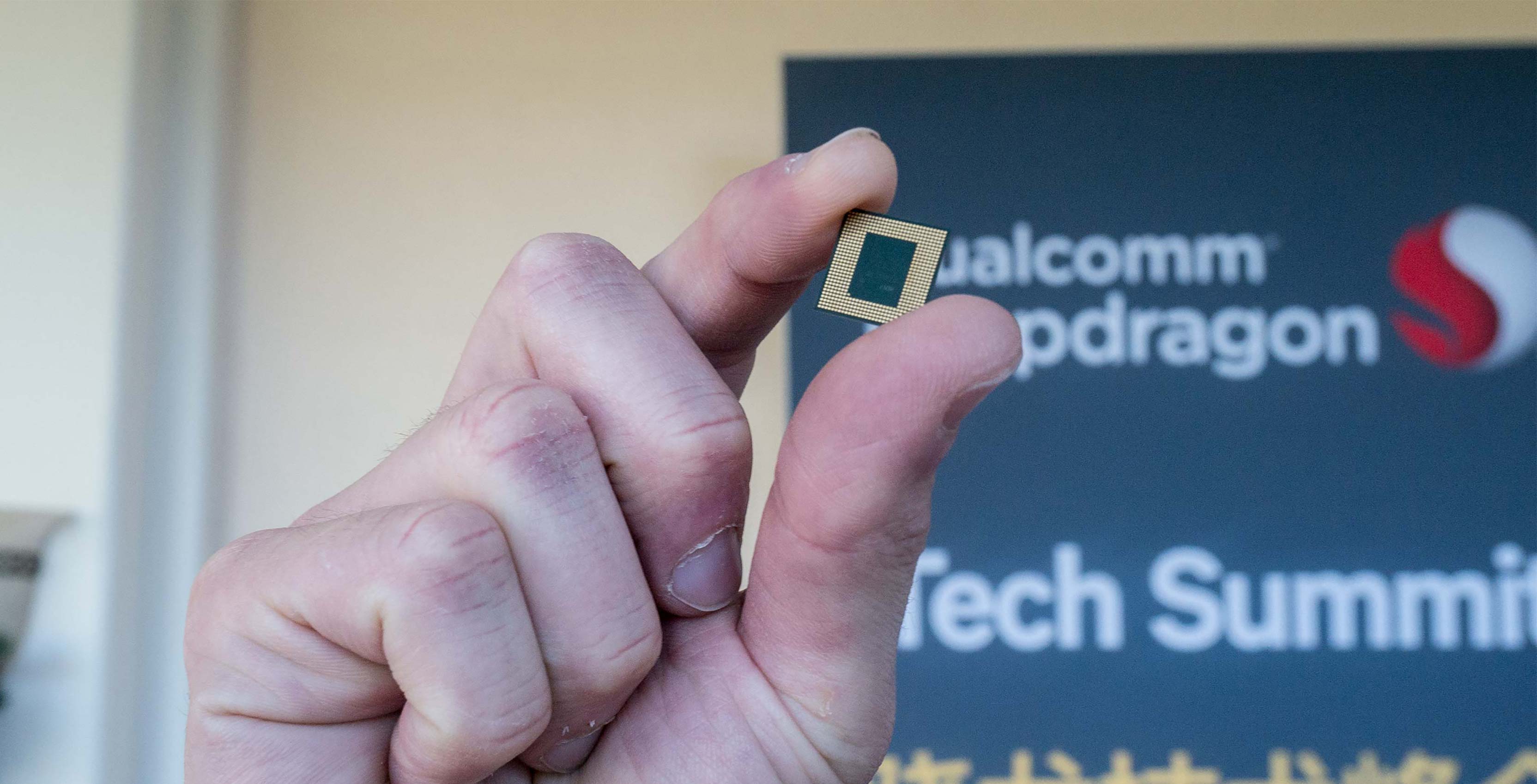
After teasing the Snapdragon 845 on the first day of its Snapdragon Tech Summit, Qualcomm has now detailed its latest premium tier chipset in full, revealing major camera improvements and a continued focus on AI and mixed reality.
Qualcomm’s new chipset, which will likely power the majority of Android flagships in the year to come, is built on the 10nm process and its Kryo 385 CPU has eight semi-customized ARM cores — four clocked at up to 2.8GHz and four at 1.8GHz.
Many of its most significant changes come courtesy of its image signal processor (ISP), the second-generation Spectra 280.
As the marquee imaging feature, Qualcomm announced the 845 can capture 4K video in HDR at 60 frames-per-second, a first for smartphones.
“We’re going to see an increase not only in the quantity of pixels, but in the quality of pixels,” said Tim Leland, Qualcomm’s vice-president of product management.
Whereas the 835 captured video with an 8-bit colour depth, the new 845 captures at a 10-bit colour depth. Qualcomm reports there are over a billion shades of colour available.

This helps with a common issue known as banding — you may have noticed it, particularly in pictures of the blue sky getting lighter as it approaches the sun in a picture. Because the ISP doesn’t have enough shades of blue it gets light in bands, rather than making a seamless transition from dark to light blue.
The 845 also improves colour gamut, with an approximately 70 percent increase in choice of colours. It can encode to the Rec. 2020 colour gamut, as opposed to the smaller Rec. 709 colour gamut.
Additionally, Qualcomm’s new tech ushers in some seriously impressive multi-frame noise reduction capabilities.
Mobile cameras often take multiple photos in order to improve quality — for instance, the Samsung Galaxy S8 takes three photos, selects the clearest and uses the other two to reduce blur.
Qualcomm’s new ISP can take up to 60 images per second at 16-megapixels, potentially offering the ability to take clearer photos than ever before.
Qualcomm says all these improvements come with a system-wide 30 percent reduction in power consumption.
The company also spent a significant amount of time discussing improvements relating to what it calls ‘XR’ — an umbrella term for virtual, augmented and mixed reality.

In particular, it highlighted ‘Adreno foveation’ — a technology that identifies where the user is looking and provides more detail within the fovea region — a depression in the retina where visual acuity is sharpest — while rendering objects with progressively less detail outside of the fovea region.
It also supports room-scale 6-degrees-of-freedom and can map spaces in real time for VR and AR.
Broadly, Qualcomm promises 30 percent faster graphics performance and 2.5 times faster display throughput.
AI made a starring appearance, too, with Qualcomm speaking on its artificial intelligence engine — the Hexagon digital signal processor (DSP). Qualcomm promises three times more performance for AI functions than with its previous mobile chipset.
As Huawei and Apple throw their marketing weight behind neural processing units, Qualcomm was also quick to note that its DSP already handles machine learning, stating that Google’s TensorFlow machine learning is optimized for the Snapdragon 835.
From a security standpoint, the 845 introduces the Secure Processing Unit, a ‘secure island’ above the trusted execution environment already present on Snapdragon devices that will, among other things, work to make biometric authentication more secure.
As for connectivity, Qualcomm’s X20 modem promises 20 percent improvement in real world and peak speeds over the x16 modem, allowing for theoretical download speeds of up to 1.2Gbps. This is achieved through five carrier aggregation, 4×4 MIMO and the use of license assisted access, which brings in unlicensed spectrum.
Meanwhile, TrueWireless Bluetooth 5 system allows for broadcast to multiple devices simultaneously, and Qualcomm says it can reduce power consumption by 50 percent for wireless headphones.
The Snapdragon 845 is expected to touch down in smartphones as early as spring 2018, and will hit Windows 10 PCs by the end of 2017.
For more detailed information, find the Snapdragon 845’s product page here.
Correction: This article originally stated devices were arriving as early as spring 2019, though in fact it is spring 2018. The article has been updated accordingly.
MobileSyrup may earn a commission from purchases made via our links, which helps fund the journalism we provide free on our website. These links do not influence our editorial content. Support us here.


